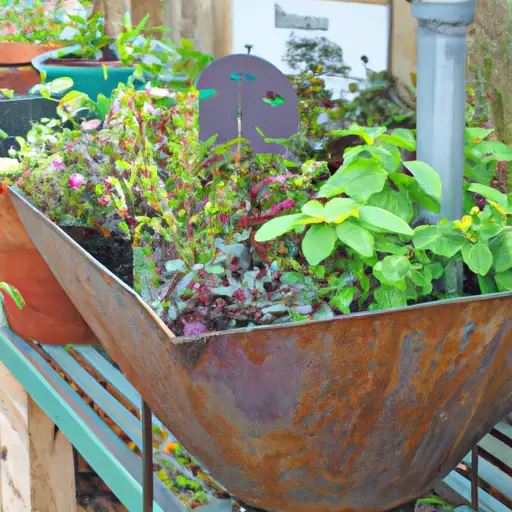Maximizing Space and Yield: Efficient Techniques in Container Gardening
Container gardening is a versatile and popular method of growing plants in small spaces. With the increasing urbanization and limited outdoor areas, many people are turning to this efficient technique to create their own green oasis. Whether you have a tiny balcony, limited yard space, or simply want to add some greenery indoors, container gardening allows you to maximize space and yield. In this article, we will explore various techniques to help you make the most of your container garden.
Choose the Right Containers
The first step in maximizing space in container gardening is selecting the right containers. Consider the size and shape of your available space before picking a container. If you have limited floor space, vertical containers or hanging baskets can be excellent options. Additionally, using stacks or tiered containers can multiply your growing area without taking up much floor space.
Another consideration is the material of the containers. Terracotta pots are classic but tend to dry out more quickly than plastic or ceramic pots. Self-watering containers are also a great choice as they provide consistent moisture levels for plants while minimizing water wastage.
Select Suitable Plants
Choosing plants that thrive well in containers is crucial for maximizing yield in limited spaces. Herbs like basil, parsley, and mint grow well in small containers indoors or on sunny windowsills. Compact vegetable varieties such as cherry tomatoes, mini bell peppers, and bush beans are ideal choices for container gardens.
Consider companion planting where different plants with complementary growth habits are grown together. For instance, pairing fast-growing lettuce with slow-growing carrots not only maximizes space but can also improve overall yield by enhancing pollination and protecting against pests.
Utilize Vertical Space
When it comes to maximizing space in container gardening, thinking vertically is key. Vertical gardening allows you to take advantage of unused vertical surfaces like walls and fences. You can use trellises or stakes to support climbing plants such as cucumbers, pole beans, and peas. These plants can be trained to grow upwards, taking advantage of unused air space and freeing up more room for other crops.
Vertical containers, such as pocket planters or hanging baskets, are also excellent options for growing cascading plants like strawberries or trailing flowers. Hanging baskets not only save space but create an aesthetically pleasing display.
Implement Succession Planting
Succession planting is a technique that allows you to maximize yield by continuously planting different crops throughout the growing season. Once one crop has been harvested, another is immediately planted in its place. This ensures a continuous supply of fresh produce throughout the entire season.
To implement succession planting effectively, choose crops with varying maturity dates. For instance, you can start with quick-growing leafy greens like lettuce or spinach and follow up with slower-growing vegetables such as tomatoes or peppers. With careful planning and timing, you can make the most of your container garden by constantly rotating crops.
Optimize Growing Conditions
To maximize yield in container gardening, it is important to provide optimal growing conditions for your plants. Ensure that your containers have proper drainage to prevent waterlogging and root rot. Use high-quality potting soil mixed with organic matter to provide essential nutrients for healthy growth.
Regularly check moisture levels and watering requirements as containers tend to dry out faster than plants in the ground. Mulching the soil surface helps retain moisture and prevents weed growth.
Additionally, consider using organic fertilizers or compost tea to provide essential nutrients for your plants without using harmful chemicals. Regularly monitor for pests and diseases and take proactive measures such as handpicking insects or using organic pest control methods to prevent infestations.
Conclusion
Container gardening offers a practical and efficient solution for those looking to maximize space without compromising on yield. By carefully selecting containers, choosing suitable plants, utilizing vertical space, implementing succession planting techniques, and optimizing growing conditions, you can achieve a thriving container garden that provides a bountiful harvest. Remember to have fun experimenting with different techniques and enjoy the process of creating your own green paradise, no matter how limited your space may be.














